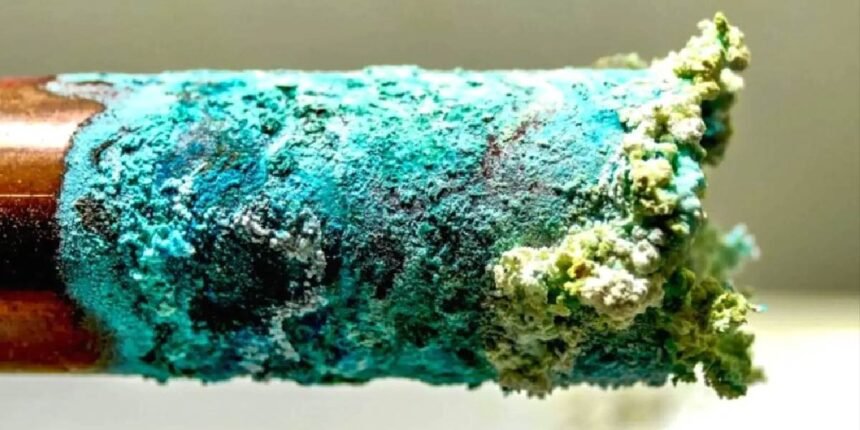Copper is a great and attractive metal. It has had a thousand-year usage in tools, pipes, Jewelry, and buildings. However, after some time, it is possible to observe that copper turns to a different color. It becomes dark-brown, dull, and then later on turns green.
There is always a question that people ask: Does copper rust like iron? Why, of all things green, does copper become green? Let us see the responses.
Is Copper Rusty?
The quick response is no. Copper does not rust as it is done with iron or steel do, know more about it.
Why Not?
Rust is a reddish brown coating that develops over iron or steel when it combines with oxygen and moisture. Rust contains iron oxide, and it eats off the metal, thus causing destruction.
Copper is an element that does not have iron; therefore, it will not have iron oxide. Rather, a different type of reaction by which copper is reacted is called oxidation, though this does not destroy the metal.
Therefore, copper cannot rust; however, it does corrode like in another form.
What is Copper as it Ages?
Copper, when placed in the air and water (copper oxide), reacts with oxygen and forms a layer. It is a drab brown or black layer.
The coatings appear in the form of a patina that is green in color on the surface when it is left longer in contact with air, water, and contaminants such as carbon dioxide and sulfur.
This layer in green mostly consists of:
- Copper carbonate
- Copper sulfate
- In salty environments, copper chloride (copper chloride)
This protective layer is green and nonmobile. It inhibits further destruction and aids in the extension of lifetime.
What is the reason behind copper turning green?
The colour changing on copper is a natural chemical reaction.
Breakdown process:
- Brilliantly coppery-red: Bright coppery-O:
- Oxidation Commences: Produces copper oxide (faint brown)
- Long-term exposure: Patinates (green)
This green patina is non-toxic. It is something of a shield that protects the underlying copper.
Where You See Green Copper
- The domes and old copper roofs
- Statues such as the Statue of Liberty.
- Antique copper cookware
- Copper outside lights and plumbing Out Outside copper lights and pipes
- Heritages and monuments
The color change is natural and is even beautiful. Precision brass CNC Machining service ensures to use of brass (an alloy of copper and zinc).
The Advantages of Copper Patina
- Protective Layer- the patina prevents oxygen and water from contacting fresh copper.
- Adverse Effect on Corrosion: Patina slows down further corrosion.
- Low Maintenance – There is no need to clean or repaint copper frequently.
- Aesthetic Appeal- The look of the antique green is adorable by many.
- Eco-friendly: Patina is formed naturally, and it does not require chemicals.
This is why copper is widely used by designers and architects as a roofing and art material.
Can You Stop Copper from Turning Green?
Yes, you can retard the occurrence of copper turning green with any protective coating.
Here’s how:
- Seal up with clear lacquer or wax.
- Store copper indoors to exclude moisture.
- Keep in dry places, not near chemicals or salt air.
Nevertheless, most opt not to age with copper after all, because they find beauty in the green patina.
Is Green Copper Cleanable?
The answer is yes, green copper can be cleaned when you want it to retain the original shine. Self-made Cleaners:
- Lemon and salt: Rub a combination of lemon and salt.
- Vinegar and flour paste: combine a mixture of vinegar, salt, and flour to make a paste. Apply it directly and wash it away.
- Commercial cleaners: Buy copper polishes in the form of liquids.
You need to keep in mind that the patina is a form of protection, and by cleaning, you will remove it; hence, you will get the green back unless you seal it.
Is the Green Patina an indication of Damage to the Copper?
No, green does not mean that the copper is destroyed. It indicates that metal is not aging abnormally but is establishing a great outer layer.
It is this green layer that makes copper capable of surviving hundreds of years outside.
Conclusion:
Copper doesn’t rust. Nope, not like your old bike left out in the rain. What does it do instead? It gets that funky green jacket—yeah, patina. Honestly, it’s kinda iconic. That green stuff isn’t a problem; it’s nature’s built-in armor, way better than what iron or steel gets (sorry, iron, but you lose this round).
That patina layer? It’s like copper’s own superhero cape, fighting off more corrosion. Think of all those badass rooftops and statues rocking that green look. It’s not just for style points—it’s practical, too.
So, next time you spot green copper, don’t panic or call it “rust.” It’s just copper doing its thing, aging gracefully, and looking cooler as the years roll by. Nature’s got taste, right?
For More Information Visit Fourmagazine







